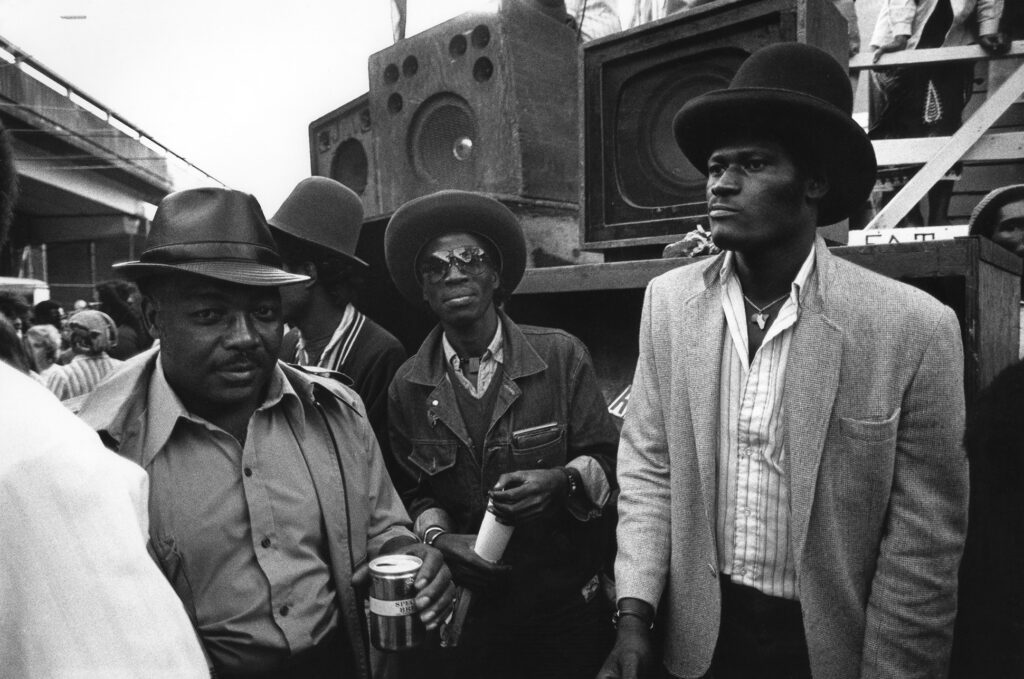
The 1960s was characterized by a rise of independence for European colonies (McMillan 2017). On August 6, 1962, Jamaica gained independence from Great Britain. During this time, many Jamaican families were moving from rural to urban areas (White 1967), however employment in the country, especially for young men, was at a low, leaving many working class families impoverished. As a relic of European colonialism, Jamaica continued to have a hierarchy with a ruling elite, primarily white Jamaicans, and a working class, primarily Afro-Jamaicans. It was among the backdrop of racial hierarchy and poverty that rude bwoys emerged. Rude bwoys, as called in Jamaican vernacular, or rudies is a subculture that formed among the impoverished young men in the city who often were involved in delincuency.
The Rude Bwoys subculture is male-centric and machismo, embodying the style of gangsters and outlaws from Hollywood western movies (Mackie 2005), outfitted in “occupational hazard glasses that identified a working class ethos, black arrow shirt with neck buttoned up, the red green and gold string around it, shoes of the English brand, Clarks worn by the more socially mobile” (Stanley 2005). They often were armed with weapons such as knives, and increasingly guns and at times demonstrated their anger through violence (White 1967). Thus, a major component of being a rude bwoy was one’s attitude: they were proud to be bold, tough, and bad (Stanley 2005). Faced with the stereotype of Black men being inherently more dangerous, more threatening, or more likely to be criminals, rude bwoys did not shy away from this image, but embraced it.
"There is a category of pro-rude boy songs in which badness was not condoned. Instead, the rude boy was portrayed as a social being shaped in the socio-historical culture of slavery, colonialism and prejudice emanating from the postcolonial Jamaican state."
Clinton Hutton
The music genres rocksteady, reggae, but particularly ska were symbolic for the Rudies. They often used it to convey messages about their beliefs and were known for playing music around their neighborhoods with stereos (Boxill 1994). Their music often reached outside of these groups into youths of the middle class, who absorbed these messages (White 1967), which is an example of diffusion. Media arose centered around Rudies either glorifying or condemning them, but with an overwhelming amount of anti-rude boy songs (Hutton 2010).
Ever since it was a European colony, there has long been a history of Jamaican immigration to the United Kingdom. Given the high population of Jamaican immigrants, a second wave of rudies occurred later in the United Kingdom. In the UK, the 70s was a time with police brutality but also black empowerment, which set the stage for the popularity of rude bwoys (McMillan 2017).
There was a strict racial hierarchy in place that oppressed Afro-Jamaicans (White 1967). Among this group of working class youth from the cities, some began to forge an identity embracing blackness, street smarts, violence, and a tough exterior, and opposing the bourgeoisie settler white Jamaicans. They held beliefs that were political in nature, opposing the national bourgeoisie and white supremacy (White 1967). This also relates to class conflict theory in its perspective of deviance as proposed by the Birmingham school, which argues that, with a lack of access to social mobility, the lower class Black youth of post-colonial Jamaica opposed the social order in favor of a new one.